Amulets depicting Egyptian gods
The amulet was found in the Phoenician-Punic necropolis of Sulky, in an unknown grave. According to other comparisons it can be dated between the fourth and third centuries B.C. It is a small glass paste amulet representing Isis nursing her son Horus (figs. 1-2), an iconography which may also be found in bronzes and engraved gems (figs. 3-3b). An amulet of this kind had to address the protection of both deities.
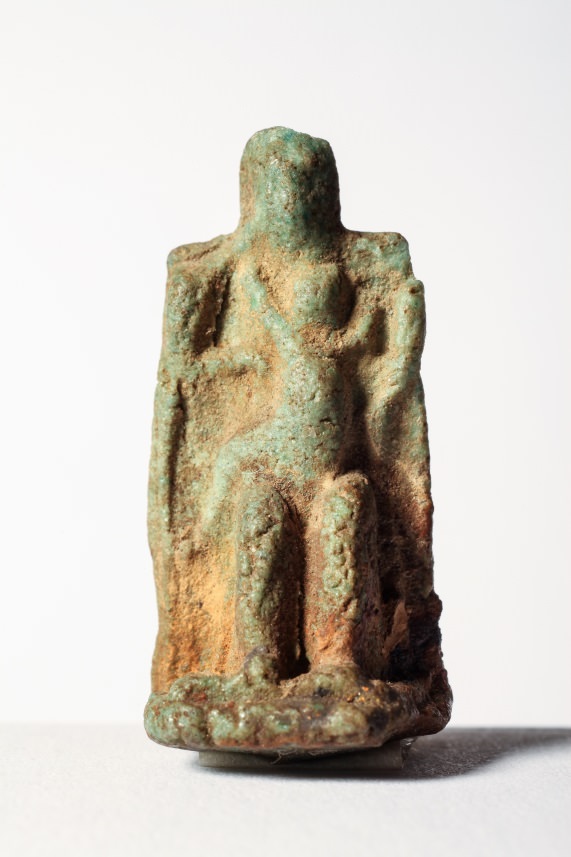


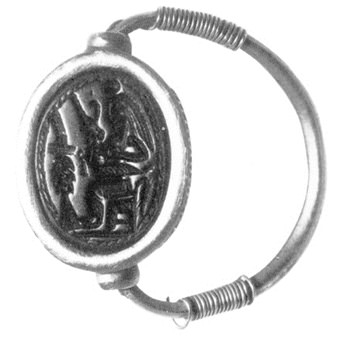
Amulets are the most common category of objects among grave goods in Sardinia and in other Phoenician-Punic sites in the Mediterranean: among these the record may be claimed by Carthage. Many of them were also found in the tombs of the necropolis and Tophet of ancient Sulky: as scholars say, in most cases, they were actually manufactured in the workshops of Sulky, although we cannot exclude that some of these small objects may have originated from Egypt, as occurred for the scarabs.
Amulets were often mounted in necklaces (as is evidenced by the hole that was made in them such as in the Sulky exemplar), together with glass paste necklace beads and other beads made of precious metal or hard stones.
An object which can be placed in this particular class of materials is the so-called amulet case, a small cylindrical container with the head of an Egyptian god, such as the lioness goddess Sekhmet for example, whose interior contained a rolled and very thin foil, engraved with images relating to the funeral rites: the judgment of the deceased or the journey to the afterlife (fig. 4).

As occurred for the amulets from Carthage, those from Sardinia also show an inclination towards subjects like Bes, Horus, Ptah-Pateco, the uraeus, other animals, body parts and various apotropaic symbols (figs. 5-7).
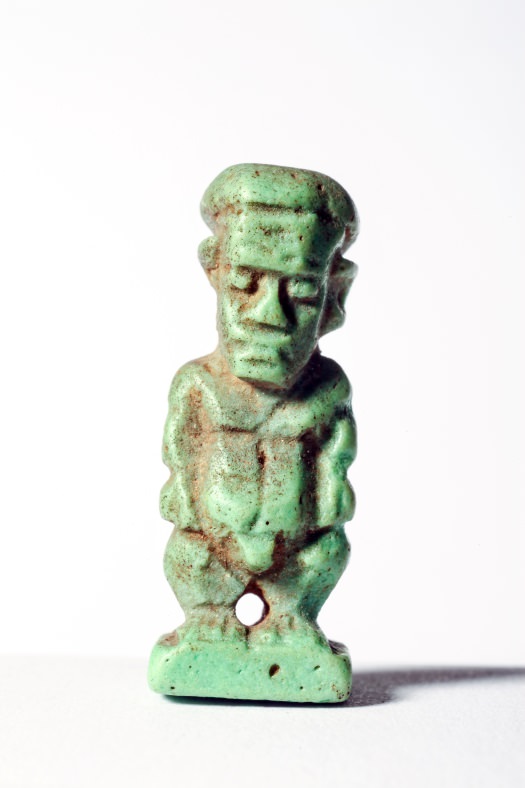
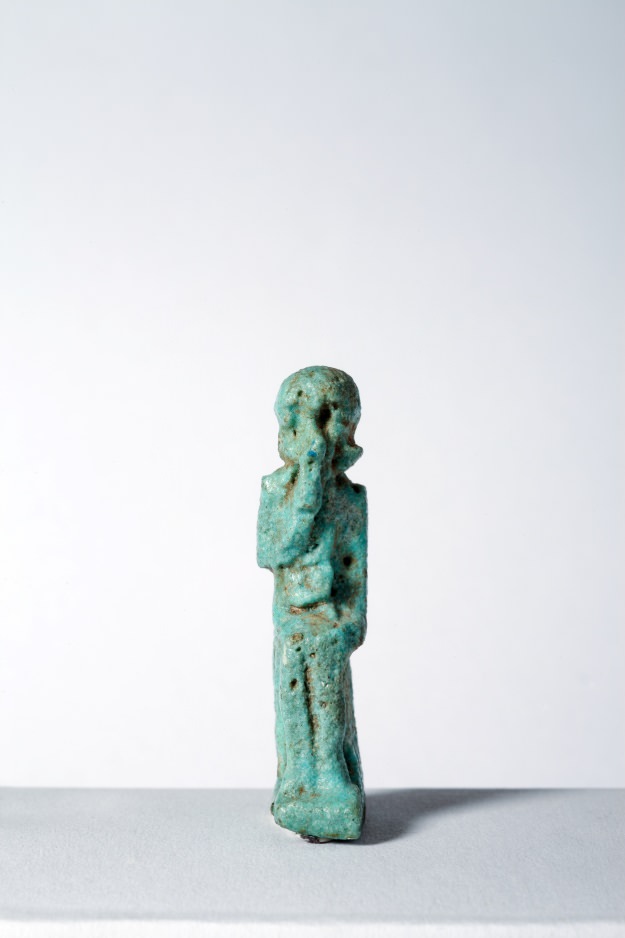
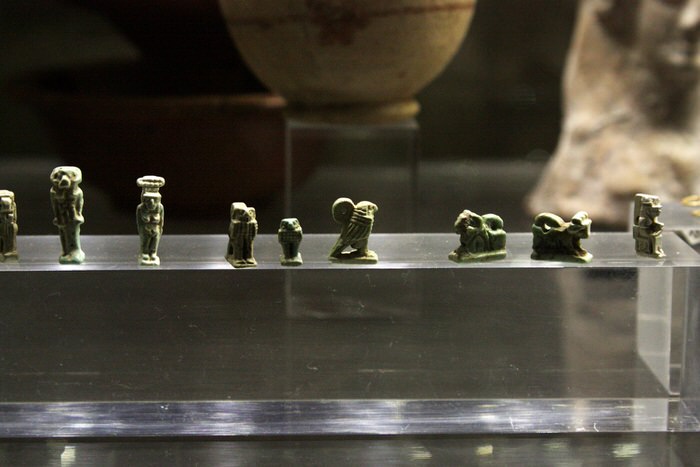
What then were amulets representing an Egyptian deity used for? They had a protective role, given by the same deity which was represented and which would cast out the evil forces which the deceased might have met along his journey to his eternal home.
Bibliografia
- F. BARRECA, La civiltà Fenicia e Punica in Sardegna, Sassari 1988.
- P. BARTOLONI, Il museo archeologico comunale “F. Barreca” di Sant’Antioco, Sassari 2007.
- P. CINTAS, Amulettes puniques, Tunis 1946.
- S. MOSCATI, Il mondo punico, Torino 1980.
- S. MOSCATI, Le officine di Sulcis, ROMA 1988.
- S. MUSCUSO, La necropoli punica di Sulky, in M. GUIRGUIS, E. POMPIANU, A. UNALI (a cura di), Quaderni di Archeologia Sulcitana 1. Summer School di Archeologia Fenicio Punica (Atti 2011), Sassari 2012.
- J. VERCOUTTER, Les objects égyptiens et ègyptisants du mobilier funéraire carthaginois, Paris 1945.

 VR
VR